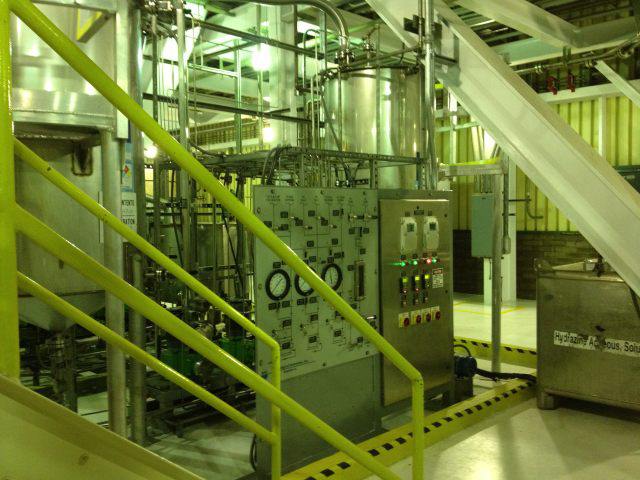Process and Chemical Feed System
Hydrazine Injection System
Problem Statement:

PVNGS had been making operational adjustments to the hydrazine feed system(s) in an attempt to maintain continuous feed into each unit's condensate water. Hydrazine is used as an oxygen scavenger to remove oxygen from the feedwater to reduce corrosion and corrosion product transport to the steam generators. Prior to the modification, PVNGS experienced repeated hydrazine pump failures that appeared to be random in nature. The seventh revision to the EPRI Secondary Water Chemistry guidelines require that the unit shut down if the required hydrazine concentration is lost for 8 or more hours. The unreliable hydrazine injection system was a long standing issue for the site and resulted in a confirmatory action letter from the Nuclear Regulatory Commission (NRC).
RSI Assessment
During a system walkdown, RSI identified several potential areas that could be contributors to the pump loss of prime issues.
- One issue is that there was little, if any, suction head for the pumps in the current feed tank and piping configuration.
- The pumps appear to be oversized to meet the injection requirements. This resulted in the pumps not operating in their optimal configuration. This exacerbates any suction related issues.
- The pump suction line was too large for metering chemicals. The larger size was appropriate for the wet layup application when the pumps are run at full stroke.
RSI Solution

RSI's approach to solving the chronic loss of pump prime at PVNGS was to:
- Use smaller injection pumps such that normal injection rates will be in the range of optimum efficiency or midpoint of their design for each purpose.
- Use variable frequency drive controllers so the motor speed can be adjusted in lieu of the pump stroke setting.
- Maximize the amount of head to the pump suction.
- Minimize the amount of suction tubing to the pumps.
- Minimize the suction tubing size to individual pumps.
- Maximize the velocity through the pump suction lines.
- Reduce the transit time from the dilution tank to the pump suction.
New pump skids have been installed in two of the three operating units at PVNGS. There have been no loss of pump suction issues identified to date. The third and final skid will be installed in 2012.
The new skids have a series of engineered solutions designed into the overall system, each designed to prevent or minimize gas formation in the system and subsequent loss of suction.
The new skids allow for operation at a higher hydrazine feed tank concentration which results in fewer batching operations.
The skids were designed for maximum operational flexibility with any of the three installed pumps being capable of injecting into any of seven injection points. Additionally, the system has the capability of injecting different concentrations of hydrazine at different rates to discrete injection points at the same time.
The wet control panel allows for any of the three pumps to feed multiple injection points.
The high capacity hydrazine addition pump has twice the capacity of the old pumps allowing for faster dosing of systems and steam generators during layup or startup conditions.
The skid has sample provisions to allow chemistry sample individual pump effluents as required.
A provision was designed into the wet panel of the skd to allow for carboy filling with hard plumbed venting capacity to the bulk system for convenience and safety.
